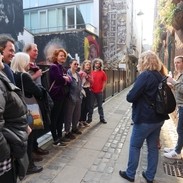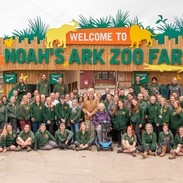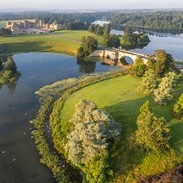Regenerative Guide to Sustainable Tourism
Introduction
At VisitEngland, our goal is to drive positive transformation for people and places. We are tackling this through four core pathways:
People (communities and visitors);
Place (climate change, nature and responsible resource use);
Partnerships (governance and collaboration);
Prosperity (quality jobs, training and green innovation).
We encourage people to work together to shift how things are done so that everyone and everything benefits.
That is why we are introducing this guide; to highlight the idea that tourism can - and should - have a positive impact, leaving a place better than it was before. The aim is for operators and visitors to be part of revitalising and regenerating destinations by contributing to a positive cycle of impacts on local environments, communities and economies.
VisitBritain/VisitEngland

I am delighted to be able to introduce VisitEngland’s first ever Regenerative Guide to Sustainable Tourism – a no-nonsense guide to long-term sustainable tourism.
Our goal is positive transformation for people and places. We are committed to working with our stakeholders to support tourism businesses and grow the visitor economy in an inclusive, accessible and sustainable way, ensuring that all corners of England continue to be a fantastic place to visit.
The guide is designed to provide a wide range of information and advice in an easily digestible format. It is modular, so that businesses of all types, and people at all stages of understanding, can find the material they need on pretty much every topic in this wide-ranging and sometimes complex field.
Everything is made as simple as possible, but no simpler. So, we invite you to join us in futureproofing your business and bringing to life the potential of tourism as a force for good.
We wish your business every success as we all do our bit to allow English tourism to flourish long into the future.
— Andrew Stokes OBE, England Director
An overview of this guide
The framework has five stages: Prepare, Learn, Act, Nurture, and Transform – which, appropriately, spells PLANT.
At the top of each numbered module, you will find the 'In a nutshell' section which summarise that section's main points.
There are 'Stop, Think, Challenge' moments throughout the process to stop and think about what you're learning.
The entire system is modular, allowing you to cover any individual piece in isolation if there is an immediate issue you want to address.
We have deliberately not used any complicated language, so it really is practical, easily understood, and no-nonsense.
Alongside the framework, there's additional information and resources you can use to do a deeper dive.
self-audit feature
Sustainability Self-Audit
The first step on the regenerative tourism journey is the Sustainability Self-Audit. Whether you're looking to dive straight in to get started or you are returning to continue working through it, you can go straight to the audit from here.
The Big Picture
A: Why is everyone talking about sustainability?
Find out why this is such a hot topic and how we got here.
B: How is everyone talking about sustainability?
A journey from CSR to sustainability to ESG to regenerative tourism.
C: Risk and opportunities
How to recognise risks and identify opportunities.
D: People, planet, profit
Explaining the thinking behind the triple bottom line.
E: Spotlight on conscious consumers
How customer preferences and behaviours are changing.
F: Sustainability is good for business
Examples of using regenerative tourism as a springboard for better things.
The PLANT Framework
Step 1: Prepare
Start here to note areas where you are already well-informed or have initiatives underway as well as identify areas where you would like to find out more. It guides you to bite-size learning that rounds out your knowledge and provides the framework for an action plan to make your business better.
Step 2: Learn
Sustainability is a complex and wide-ranging topic so it is no surprise that learning is the largest step of this framework. It covers background of key sustainability issues, core elements of environmental stewardship, what social responsibility involves, and how your business can contribute to tourism being a force for good.
Step 3: Act
It is easy to talk about regenerative tourism, but without action, nothing changes. In this step, we help you create an action plan, distinguish quick wins from longer-term strategic initiatives, establish realistic time frames, recognise financial and human resource requirements, identify obstacles, and agree on criteria for success.
Step 4: Nurture
Without proper care and attention, even the best-intended initiatives can wither and die. So, your efforts need regular review, refinement and sustained enthusiasm and application. That can be hard to do on your own, so you need to engage persuasively with others who can help you keep delivering your plan.
Step 5: Transform
You’ve taken action and now it is time to publicise your efforts to whoever matters most to your business - staff, customers, potential customers, or even investors. Communicate with a high level of integrity, confidence and the positive attitude that comes with a desire to support and enact sustainable and regenerative tourism.
Additional information
Sustainability jargon buster
All subjects have their jargon and acronyms. These plain English definitions should help you navigate these topics with confidence.
Further reading book list
The body of literature on ethical and sustainable business practice is growing steadily. One-page summaries of many books on the topics can be found at greatesthitsblog.com.
Finished the guide and looking to do more? We have collected a range of useful resources to help you continue your regenerative tourism journey - including everything from sustainability calculators to guides and tips on managing water, reducing waste, saving energy and ways to reduce your carbon footprint.







